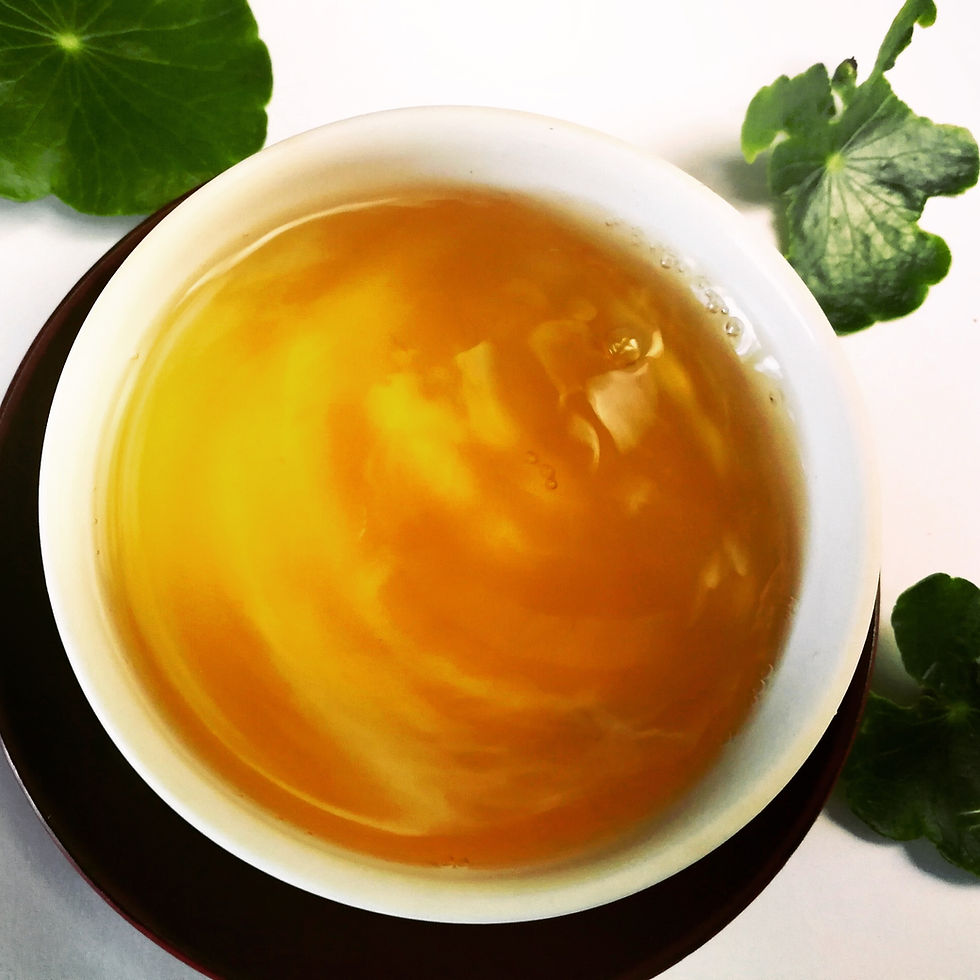Blog 19: The Journey of White Tea
- Valley Brook Tea

- May 21, 2018
- 3 min read
Updated: Oct 18, 2018
If you are a regular visitor of this blog, you must have noticed that I spend much of my time talking about Wu-Yi oolong tea-making. I even wrote multiple blogs for just one process (the shaking). However, when it comes to white tea tea-making, it seems I don’t have anything to offer. If you also look at our white tea product page and our tea masters page, there is no information about a white tea teamaker. The truth is, making white tea is a very simple process. Our oolong tea master Mr. Xue jokes that he sometimes thinks there is no tea-making required for white tea at all. But, the journey of white tea is different from other teas. Today, let’s have a look at what this special journey really is.
White tea’s uniqueness exists in its slow transformation from the natural “fresh leaf” state to a mild “aged” state. White tea lovers always say that “one-year tea, three-year medicine, and seven-year treasure”. This means that the nature of white tea would change when it is aged. That’s why some people might say that “unaged” white tea is like a semi-finished product. White tea’s aroma, taste and appearance would all change during the aging.

“One-year tea” means fresh white tea is almost identical to green tea in many ways. It is a “colder” tea (to understand what “colder” and “warms” means, please visit our last blog) and tastes like green tea. Once infused, white tea has a bright, light yellow color. It tastes refreshing and slightly flat like mountain springs.
“Three-year medicine” means that after aging for 3 to 4 years, the nature of white tea would change a lot. It is no longer a “colder” tea. It becomes mild and smooth. The color after the infusion would become orangish. The sweet aroma found in fresh white tea disappears, instead it would develop a lotus-leaf fragrance. 3-year aged white tea can be used as both tea and meditating medicine. You can either enjoy it or let it keep aging.
“Seven-year treasure” means that after aging for 5 to 7 years, white tea would be considered as the valuable “old white tea”. Old white tea has an amber color after the infusion. Depends on the years of aging, old white tea could develop a jujube aroma and even an “herbal medicine” fragrance. High quality old white tea has a distinctive thicker and smoother taste that cannot be found in other white teas.

To understand white tea’s marvelous change of natures, we need to first talk about how white tea is made. After the harvest, white tea fresh leaves would be spread out on a clean surface to sun dry. This process is the same as the one in Wu-Yi oolong tea-making (shown above). The purpose of this step is to lose the excessive water in the leaves. Then, all leaves would be dried and packaged. And these are all the steps in white tea tea-making. It is even simpler than that of green tea. Green tea has a different process called “hot stirring” to stop fresh leaves from fermenting (this process is also found in oolong tea-making). Because white tea leaves are never “hot stirred”, white tea has multiple kinds of microorganisms to help all tea leaves aging and transforming into different natures. This is quite similar to winemaking. Some wines are cellared right after the distillation. Cellared wine can be aged for 10 years, 20 years or even longer before it is bottled. It is the microorganisms that make the difference.
Finally, I’d like to share my view on purchasing white tea products or any aged tea products (i.g pu-er tea). I believe if you’ve made this far into the blog, you must want some old white tea. However, selecting an old white tea can be tricky. Aged white tea doesn’t guarantee good quality. Aging can only make good white tea better. Rubbish from 10 years ago is still rubbish today. I always suggest my customers to buy fresh white tea. This way you can store the white tea yourself. That is the only way to make sure how many years your white tea is actually aged. Because no one knows your tea better than you.
I hope you enjoy today’s blog. As always, if you have any questions or suggestions, please leave a comment, tweet us @valleybrooktea, or email us at contact@valleybrooktea.com. Please also follow us on Instagram @valleybrooktea and get our daily tea updates!




Comments